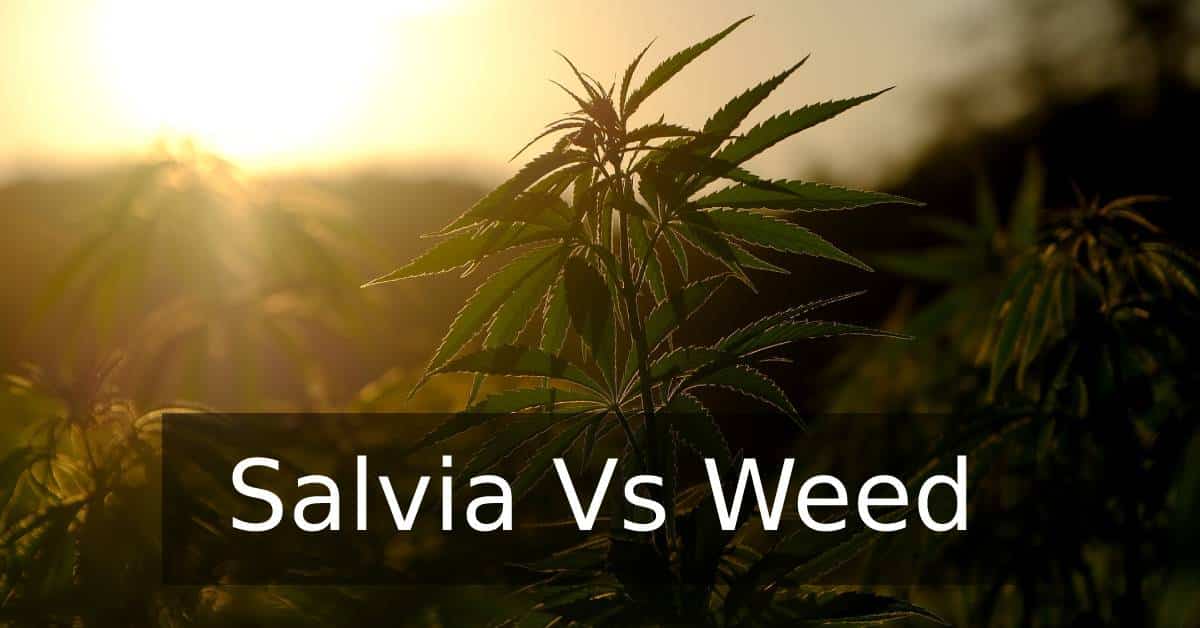Overview
Salvia:
Anyone who has ever tried salvia knows it’s not to be taken lightly. While it is generally categorized with the weed family, it is in fact derived from the mint leaf family; most commonly as a sage plant. The name itself derives from Latin origins meaning “to feel well, healthy, to heal.” While it has seemingly innocent roots (no pun intended), salvia is known to produce hallucinogenic experiences, commonly referred by the common man as “tripping balls”. However, unlike acid, shrooms, or some of the more hardcore hallucinegons out there, salvia is known to be realtively harmless because the trips do not last for longer than a few minutes. According to Drug Facts,
“Subjective effects of salvia use have been described as intense but short-lived, appearing in less than 1 minute and lasting less than 30 minutes. They include psychedelic-like changes in visual perception, mood and body sensations, emotional swings, feelings of detachment, and a highly modified perception of external reality and the self, leading to a decreased ability to interact with one’s surroundings. This last effect has prompted concern about the dangers of driving under the influence of salvinorin”.
Weed:
Weed is a slang term for marijuana, a drug that’s derived from the dried flowers of the cannabis plant. Other names for marijuana include Mary Jane, pot, herb, grass, and ganja. So when you hear someone say they just smoked a little weed, it’s marijuana to which they’re referring. Is weed a drug? Most definitely. While it’s not as dangerous or as habit-forming as other drugs like cocaine or opioids, it has many of the same mind-altering capabilities associated with them.
“State laws differ on the conditions that you can legally treat with medical marijuana. But you might be allowed to use it if you have Alzheimer’s, ALS, cancer, Crohn’s disease, epilepsy, seizures, hepatitis C, AIDS, glaucoma, multiple sclerosis, posttraumatic stress disorder, chronic pain, or severe nausea”.
Salvia divinorum:
Salvia divinorum is a fast-acting hallucinogenic herb that’s become a popular recreational drug among teenagers and young adults. It can be sold as seeds, leaves, or as a liquid extract and, upon burning, many say the smell is similar to incense. Although salvia isn’t illegal according to federal law, a handful of states and a number of countries have passed laws to regulate its use.
Still, it’s often called a “legal” trip because it can mimic the effects of illicit substances like LSD and ecstasy though salvia’s effects don’t last as long—usually around 8 minutes—after which, they taper off.
Salvia Vs Weed
| Salvia | Weed |
| Salvia plants are traditionally noted for their antioxidant effects and ability to enhance ‘head and brain’ function, improve memory, quicken the senses, and delay age-associated cognitive decline | Marijuana, weed, pot, dope, grass. They’re different names for the same drug that comes from the cannabis plant. You can smoke it, vape it, drink it, or eat it. Most folks use marijuana for pleasure and recreation. But a growing number of doctors prescribe it for specific medical conditions and symptoms. |
| Salvia alters dopamine levels in ancient parts of the brain responsible for motivation, reward, and the internal sense of what is going on in our bodies. The Mazatec use Salvia as part of a larger ritual and worldview that cannot be reduced to a single pharmacological mechanism. | Weed use directly affects the brain — specifically the parts of the brain responsible for memory, learning, attention, decision making, coordination, emotions, and reaction time. |
| Black sage, Salvia mellifera, can be made into a sun tea that is used as a foot soak to treat pain patients. The monoterpenoids and diterpenoids in the preparation penetrate the skin of the feet and stop the pain chemokine cycle, which may be the basis of chronic pain. | A few studies have found that marijuana can be helpful in treating neuropathic pain (pain caused by damaged nerves). However, more research is needed to know if marijuana is any better or any worse than other options for managing chronic pain. |
| Sage is used for digestive problems, including loss of appetite, gas (flatulence), stomach pain (gastritis), diarrhea, bloating, and heartburn. It is also used for reducing overproduction of perspiration and saliva; and for depression, memory loss, and Alzheimer’s disease. | Smoking cannabis can cause some stinging or burning in your mouth and throat while you’re inhaling. Cannabis can cause digestive issues when taken orally. While THC has been shown to ease nausea and vomiting, in some people long-term heavy use can paradoxically cause nausea and vomiting. An increase in your appetite is common when taking any form of THC, leading to what many people call “the munchies.” |
The Differences Between Salvia Divinorum & Marijuana
| Salvia Divinorum | Marijuana |
| Salvia divinorum can be used as an alternative therapy for inflammatory and neuropathic pain, due in part to the presence of salvinorin A, a powerful KOR agonist and an allosteric modulator of CB1 receptors. | Even though pain management is one of the most common reasons people use medical marijuana in the U.S., there is limited evidence that marijuana works to treat most types of chronic pain. |
| Salvia divinorum, also known simply as salvia, is a species of herbal mint plant native to Mexico. It is a fast-acting hallucinogenic herb that provides transient psychoactive properties when its leaves are consumed by chewing, smoking, or drinking. | Drinking before using weed can intensify weed’s effects. This is because alcohol increases the absorption of weed’s main psychoactive ingredient, delta-9-tetrahydrocannabinol (THC). This generally results in a stronger high. While this might be nice for some folks, it can cause others to green out. |
| In folk medicine of Asia and Latin America, it has been used for the treatment of different kinds of disorders including seizure, ulcers, gout, rheumatism, inflammation, dizziness, tremor, paralysis, diarrhea, and hyperglycemia. | Studies report that medical cannabis has possible benefit for several conditions. State laws vary in which conditions qualify people for treatment with medical marijuana. If you’re considering marijuana for medical use, check your state’s regulations. |
| Salvia Divinorum Feel the positive effects of turmeric and organic ginger on your immune system. | Marijuana and other exogenous cannabinoids alter immune function and decrease host resistance to microbial infections in experimental animal models and in vitro. Two modes of action by which delta9-tetrahydrocannabinol (THC) and other cannabinoids affect immune responses have been proposed. First, cannabinoids may signal through the cannabinoid receptors CB1 and CB2. Second, at sites of direct exposure to high concentrations of cannabinoids, such as the lung, membrane perturbation may be involved. In addition, endogenous cannabinoids or endocannabinoids have been identified and have been proposed as native modulators of immune functions through cannabinoid receptors. Exogenously introduced cannabinoids may disturb this homoeostatic immune balance. |



